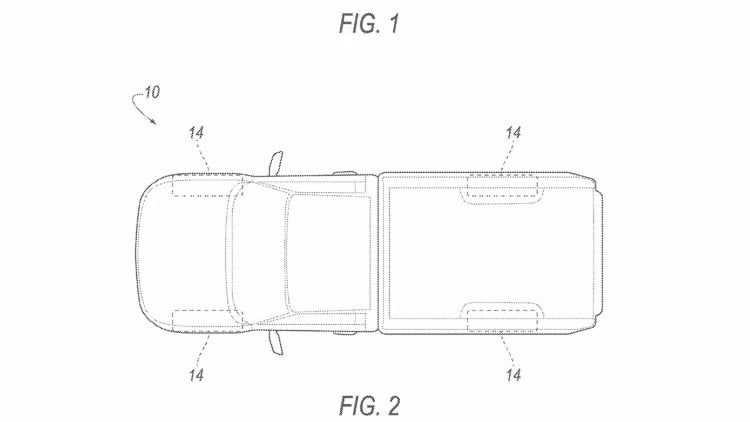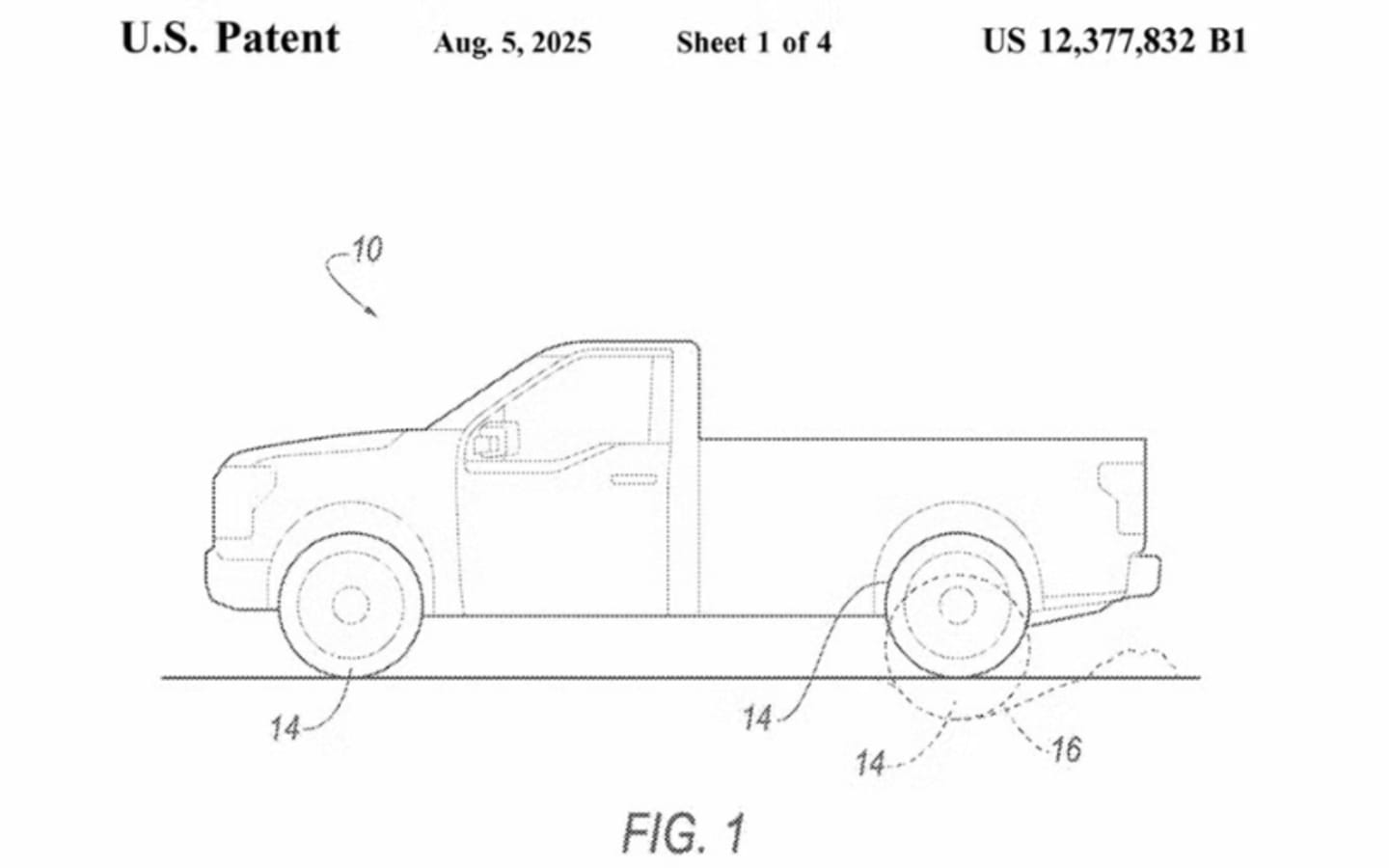For anyone who’s ever taken their truck or SUV off the beaten path, the idea of getting stuck is a familiar worry. Mud, sand, or rocky terrain can turn a weekend adventure into a long day of recovery. Ford, a name synonymous with rugged durability since Henry Ford founded the company in 1903, has a new trick up its sleeve to help drivers take control in those tough moments. Their latest patent, granted to Ford Global Technologies LLC, introduces a feature called the One-Wheel Dig Mode, and it’s as wild as it sounds. This system lets a vehicle dig a hole using just one wheel, opening up new possibilities for off-road enthusiasts, workers, and anyone who needs to get the job done in tough conditions.
What Is One-Wheel Dig Mode?
Imagine you’re deep in the woods, your truck bogged down in mud, and you need an anchor point to winch your buddy’s rig out of a ditch. Ford’s One-Wheel Dig Mode is designed for exactly that kind of scenario. The system works by locking the brakes on three of the vehicle’s wheels while letting the fourth spin freely. That spinning wheel becomes a makeshift excavator, kicking up dirt, rocks, and roots to create a hole. The driver has to manually activate this mode—no surprise, since you wouldn’t want it kicking in during your morning commute. Once the hole is deep enough, the vehicle’s smart tech steps in, using sensors to detect when the job is done and stopping the wheel automatically.

Image credit: Ford/USPTO
This isn’t just a gimmick. The system taps into the vehicle’s onboard computers, suspension sensors, and drivetrain controls to make it work smoothly. It’s a high-tech solution to a low-tech problem, blending Ford’s engineering know-how with real-world utility. And while the patent focuses on gas-powered vehicles, it hints that this feature could also work on electric models, like Ford’s growing lineup of EVs under the Ford Model e division.
Why Dig a Hole?
At first glance, the idea of a truck digging a hole might sound like something out of a construction site, not a trail. But Ford’s patent lays out some practical uses that make a lot of sense for anyone who spends time off-road. The primary purpose is to create an anchor point for recovery operations. If another vehicle is stuck, you can dig a hole to secure a winch or a come-along, giving you a solid point to pull from. This could be a lifesaver in remote areas where help is far off and the terrain is unforgiving.
Beyond recovery, Ford suggests other uses, like digging holes for camping or job sites. Picture setting up a campsite in the wilderness—maybe you need a hole for a fire pit or to anchor a tent in rocky ground. On a work site, a quick hole could help with securing equipment or setting up temporary structures. While these ideas sound promising, they’re less straightforward than the recovery application. Digging with a tire isn’t exactly precise, and it’s hard to imagine using this feature for anything too delicate.
There’s a catch, though. Spinning a tire to dig a hole is going to take a toll on the rubber. The patent doesn’t sugarcoat this—using One-Wheel Dig Mode will likely chew through your tires faster than normal driving. For folks who already push their vehicles hard on rocky trails or muddy paths, this might mean budgeting for more frequent tire replacements. Still, for those moments when you’re stuck and need a solution, the trade-off could be worth it.
Which Ford Vehicles Could Get This Feature?
Ford’s patent is broad, suggesting that One-Wheel Dig Mode could be fitted to everything from sedans to commercial vans, minivans, taxis, and even buses. But let’s be real—nobody’s digging holes with a Mustang convertible or an eTransit van. This feature is tailor-made for Ford’s off-road heavyweights, like the Bronco and F-150, especially the rugged trims like the Bronco Raptor or F-150 Tremor. These vehicles are built for folks who aren’t afraid to get dirty, whether they’re crawling over boulders, hauling gear to a remote job site, or exploring backroads on a hunting trip.
The Bronco, with its off-road-focused design, seems like the perfect candidate. Its Terrain Management System already offers modes like Trail and Deep Snow/Sand, so adding a dig mode would fit right in. The F-150, particularly in high-performance trims like the Raptor, is another natural fit. With its best-in-class towing and reputation for toughness, the F-150 could make great use of a feature that helps drivers get out of sticky situations. Ford’s Expedition Tremor, built for rugged adventures with seating for up to eight, could also benefit, especially for those family trips that venture far off the pavement.
How It Stacks Up Against the Competition
Ford isn’t the only automaker thinking outside the box for off-road features. Rivian and Mercedes-Benz have their “tank turn” systems, which let vehicles pivot in place by spinning wheels on opposite sides in different directions. GMC’s Hummer EV has its Crabwalk mode, allowing diagonal movement at low speeds to navigate tricky terrain. These features are flashy, but Ford’s One-Wheel Dig Mode is more about utility than showmanship. It’s not about looking cool—it’s about solving a problem when you’re stuck in the middle of nowhere.
If Ford brings this feature to production, it could give them an edge in the off-road market. The ability to create an anchor point on the fly is something no other automaker is offering, and for serious off-roaders, that could be a deciding factor when choosing their next rig. Ford’s been a leader in trucks and SUVs for decades, and under CEO Jim Farley, the company is doubling down on innovation to stay ahead of the pack.
The Bigger Picture
Based in Dearborn, Michigan, Ford has a long history of building vehicles that can handle whatever you throw at them. From the assembly lines of the early 20th century to today’s high-tech SUVs and trucks, the company has always found ways to push the envelope. The One-Wheel Dig Mode is a perfect example of that spirit—taking a simple idea and using cutting-edge tech to make it real. It’s not just about digging a hole; it’s about giving drivers the confidence to tackle tough situations without breaking a sweat.
Of course, there are questions. How much will this feature cost to add to a vehicle? Will it be standard on off-road trims or an expensive add-on? And how practical is it really to use a tire as a shovel? The patent doesn’t answer these, and Ford hasn’t announced plans to put this feature into production yet. There’s also the fact that Ford’s been focusing heavily on hybrids and EVs, with their next-generation electric pickup ((codenamed T3) now delayed until 2026. Could One-Wheel Dig Mode be part of that future lineup? Only time will tell.
Why It Matters
For the guy who spends his weekends exploring backroads, hauling gear to a hunting cabin, or working long days on a remote job site, Ford’s One-Wheel Dig Mode could be a game-changer. It’s not about replacing your shovel or calling a tow truck—it’s about having one more tool in your arsenal when the going gets tough. Whether you’re pulling a buddy’s truck out of a rut or setting up camp in the middle of nowhere, this feature could make the difference between a story you laugh about later and a day you’d rather forget.
Ford’s patent shows they’re thinking about the real-world problems drivers face, not just the flashy stuff. It’s a reminder that even in an age of electric vehicles and self-driving tech, there’s still a place for good old-fashioned ingenuity. If this feature makes it to production, it could cement Ford’s reputation as the go-to brand for those who live for the open road—and the trails beyond it.





